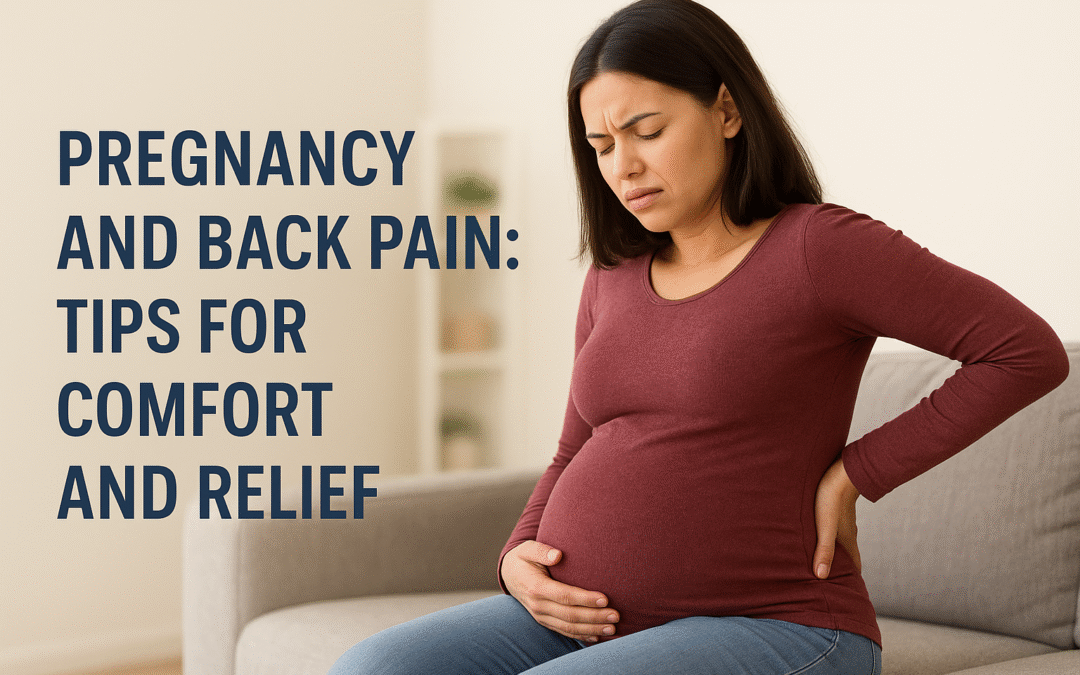Pregnancy is an incredible journey, but it comes with its challenges—one of the most common being back pain. As your body adjusts to accommodate a growing baby, the spine, muscles, and ligaments undergo significant changes, often leading to discomfort. Understanding why back pain occurs and how to manage it can make your pregnancy more comfortable and enjoyable.
Why Back Pain Happens During Pregnancy:
1. Weight Gain
Pregnancy naturally adds weight, especially in the abdomen. This extra weight shifts your center of gravity forward, putting strain on the lower back muscles as they work harder to maintain balance.
2. Posture Changes
As your belly grows, your posture adapts to support the extra weight. This often results in increased curvature of the lower spine (lordosis), which can compress nerves and cause pain.
3. Hormonal Changes
During pregnancy, the body releases a hormone called relaxin, which loosens ligaments in the pelvis and spine. While this helps prepare for childbirth, it can also make your joints less stable, leading to discomfort and back pain.
4. Muscle Separation
The expanding uterus stretches the abdominal muscles, sometimes causing a condition called diastasis recti (separation of the abdominal muscles). When the core muscles are weakened, they provide less support for the spine, increasing the likelihood of back pain.
5. Stress and Fatigue
Pregnancy can be physically and emotionally demanding. Stress increases muscle tension, particularly in the back and shoulders, and fatigue can make it harder for your body to compensate for postural changes, worsening pain.
Tips for Comfort and Relief:
Fortunately, there are several safe ways to manage and relieve back pain during pregnancy:
1. Maintain Good Posture
Stand tall with shoulders back and relaxed.
Avoid locking your knees when standing.
When sitting, use a chair with good lumbar support or place a small pillow behind your lower back.
2. Exercise and Stretch
Gentle exercises such as prenatal yoga, swimming, and walking can strengthen back and abdominal muscles.
Stretching exercises like cat-cow pose or pelvic tilts help relieve tension.
Always consult your healthcare provider before starting any exercise routine.
3. Sleep Comfortably
Sleep on your side with a pillow between your knees to reduce strain on your back.
Consider using a pregnancy pillow to support your abdomen and lower back.
4. Wear Supportive Gear
Maternity belts can provide extra support to your lower back.
Comfortable, low-heeled shoes with good arch support help maintain balance and posture.
5. Apply Heat or Cold
Warm compresses can relax tense muscles.
Cold packs may help reduce inflammation and pain.
Avoid very hot baths or heating pads directly on your abdomen.
6. Practice Mindfulness and Relaxation
Techniques such as deep breathing, meditation, or prenatal massage can reduce stress and ease muscle tension.
Focus on gentle movements rather than heavy lifting or sudden bending.
7. Seek Professional Help if Needed
Physical therapy or prenatal chiropractic care may provide additional relief.
Consult your doctor if pain is severe, persistent, or accompanied by other symptoms like numbness, weakness, or fever.
Conclusion:
Back pain during pregnancy is common, but it doesn’t have to dominate your experience. By maintaining good posture, engaging in safe exercises, sleeping comfortably, and using supportive tools, you can minimize discomfort and enjoy this special time. Always listen to your body and consult your healthcare provider for personalized advice. With the right strategies, you can carry your pregnancy with greater comfort and ease.
Early awareness and preventive care go a long way in ensuring spinal stability, flexibility, and strength throughout life. Consult our Dr. Sreenath Rao Jakinapally for expert spine care.
Taking care of your spine today means investing in a healthier, pain-free tomorrow.


Recent Comments